Struggling to see faraway objects clearly? You might have Myopia, also known as nearsightedness, or myopia nearsightedness. This article will explain what myopia is, why it happens, its symptoms, and how you can treat and manage it effectively.
Key Takeaways
-
Myopia, or nearsightedness, is a refractive error that causes blurry vision for distant objects, primarily due to genetic and environmental factors.
-
Common symptoms include difficulty seeing distant objects and eyestrain, prompting the need for early diagnosis and intervention.
-
Management strategies for myopia range from corrective lenses and refractive surgery to lifestyle adjustments like increased outdoor activities and vision therapy.
What is Myopia (Nearsightedness)?
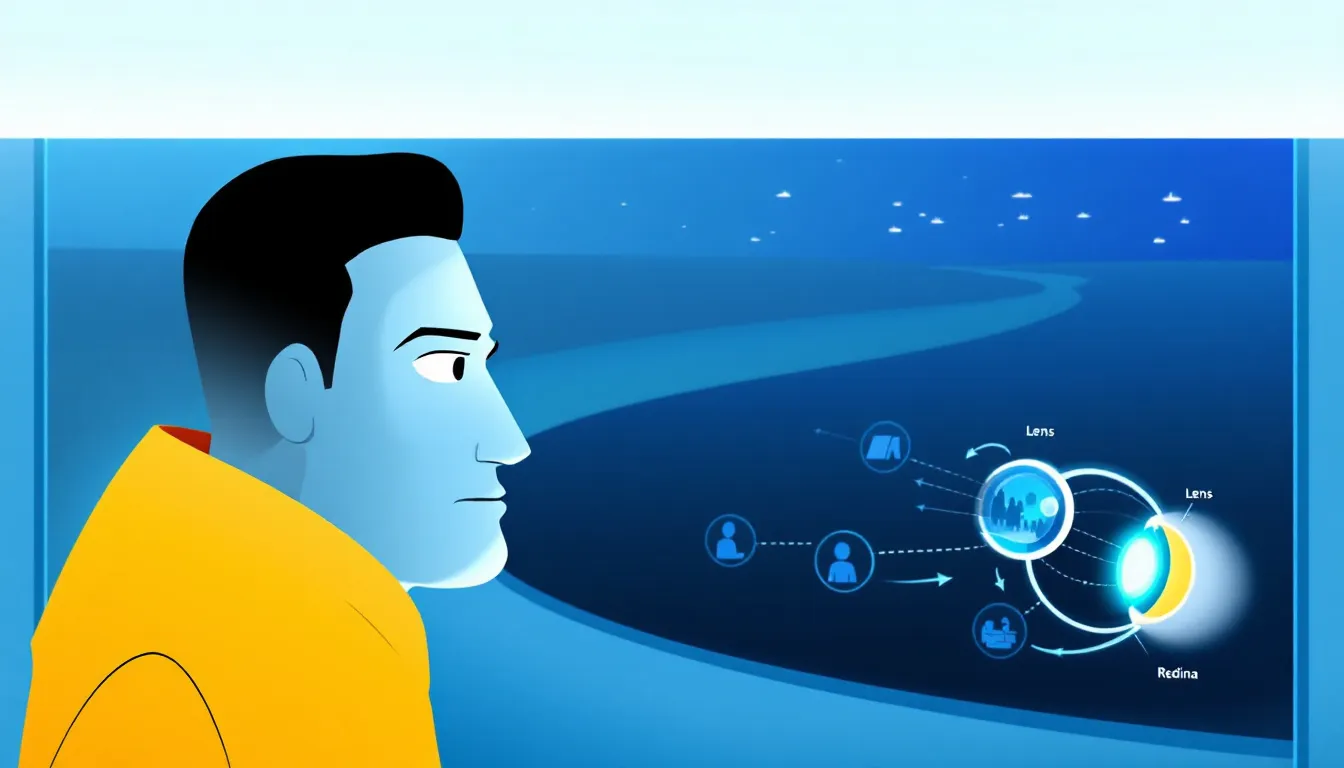
Myopia, or nearsightedness, is a common refractive error where distant objects appear blurry, while close-up objects remain clear. This condition arises because the eyes focus light in front of the retina instead of directly on it, leading to blurred vision for distant objects and other refractive errors. Myopia arises when the eyeball is slightly longer than normal or the cornea is too curved, leading to incorrect light focus.
The degree of myopia can vary from mild to severe nearsightedness. Mild myopia might only cause slight difficulty seeing distant objects, while high myopia can significantly impact daily activities and increase the risk of other eye health issues.
Understanding the mechanics behind myopia is the first step towards managing and treating this common vision condition.
Common Symptoms of Myopia
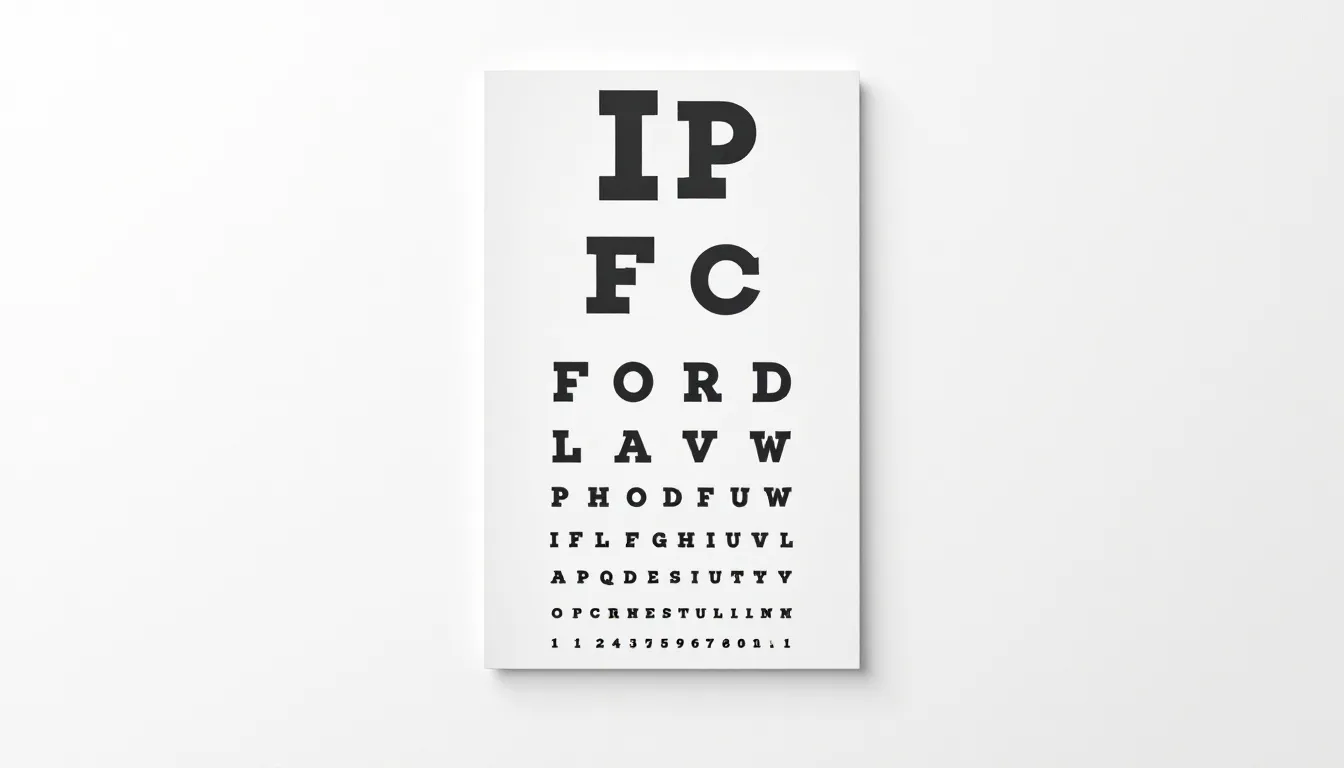
Early diagnosis and treatment depend on recognizing myopia symptoms. One of the most common signs is blurry vision when trying to view distant objects. This can manifest in various ways, such as struggling to read signs from a distance or seeing the blackboard clearly in a classroom.
Additionally, individuals with myopia might frequently squint or partially close their eyelids to improve clarity. This behavior can lead to eyestrain and frequent headaches, which are also common symptoms associated with myopia.
Awareness of these signs prompts timely medical advice and appropriate treatment.
Causes and Risk Factors of Myopia
Knowing the causes and risk factors aids in preventing and managing myopia. Genetics play a significant role; having a nearsighted parent increases the likelihood that a child will develop myopia. A family history of eye diseases further elevates this risk.
Environmental and lifestyle factors also contribute to the development of myopia. Here are some key contributors:
-
Spending excessive time on near work, such as reading or using digital devices, is strongly linked to the rising prevalence of myopia.
-
Urban living environments, characterized by limited outdoor activities and increased near work, are associated with higher rates of myopia compared to rural settings.
-
Insufficient light exposure and low physical activity are additional environmental factors that increase the risk.
Health conditions like diabetes and autoimmune disorders have been associated with higher myopia prevalence in children. Both low and high body mass index (BMI) are associated with a higher risk of developing myopia. This connection highlights the importance of maintaining a healthy weight. Knowledge of these factors guides prevention and early intervention strategies.
Diagnosing Myopia
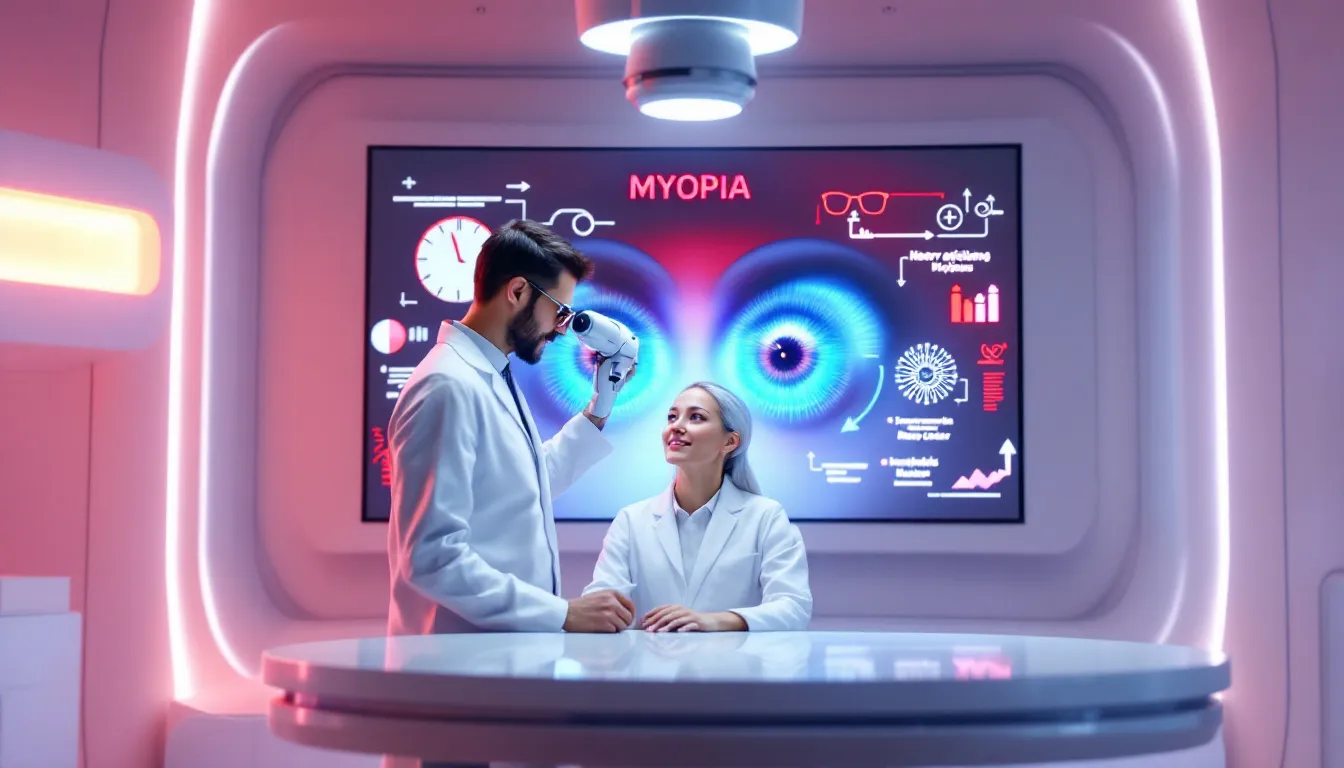
A comprehensive eye examination using various methods is key to diagnosing myopia. One of the primary tests is the visual acuity test, where patients read letters from an eye chart at a distance, and their results are recorded as a fraction. This test helps determine the clarity of distance vision and is a fundamental part of a myopia diagnosis.
In addition to the visual acuity test, eye doctors use a retinoscope to evaluate how light reflects off the retina, determining the eye’s refractive error. This tool is especially useful for very young patients who cannot read an eye chart. The power of corrective lenses needed for myopia is then refined based on patient feedback during the examination.
Regular eye health monitoring, especially for severe myopia, detects complications and ensures appropriate treatment. Early detection and management through comprehensive eye examinations prevent long-term vision problems.
Treatment Options for Myopia
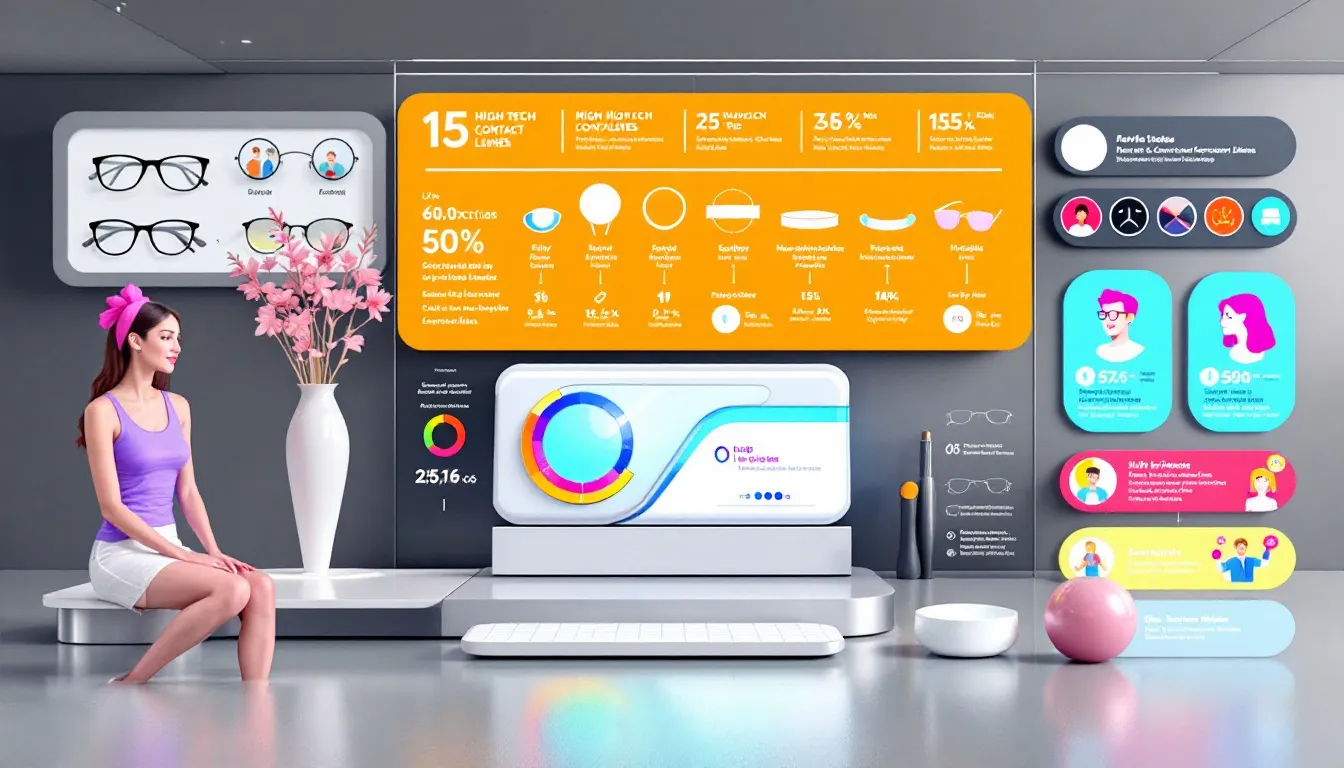
A variety of treatment options are available to manage and correct myopia. The most common methods include eyeglasses, contact lenses, and refractive surgery. These treatments aim to focus light correctly onto the retina, thereby improving distance vision and reducing blurred vision.
Vision therapy and eye exercises provide non-surgical management options. Vision therapy involves exercises and aids to improve visual skills and reduce eyestrain, potentially aiding in myopia management. These treatments cater to various needs and preferences.
Eyeglasses and Contact Lenses
Eyeglasses and contact lenses are the simplest and most common myopia correction methods. These corrective lenses work by focusing eye focus light accurately on the retina, thereby managing myopia and improving distance vision. The power of these lenses is expressed in diopters, with negative values used to indicate the type of lens needed to correct myopia.
Different types of lenses are available to address varying degrees of myopia. Strong prescriptions, however, can lead to issues like prismatic movement and chromatic aberration, which might affect visual clarity. Ophthalmologists use tools like a phoropter to measure glasses prescriptions accurately and a retinoscope for younger patients who cannot read an eye chart.
Eyeglasses are considered the simplest and safest method for myopia correction. They are easy to use and can be adjusted as needed, making them an excellent choice for both children and adults.
Refractive Surgery
Refractive surgery offers a more permanent solution for correcting myopia. Procedures involve reshaping the cornea or implanting corrective lenses. LASIK surgery, for example, involves cutting a corneal flap, lifting it, and using an excimer laser to ablate the tissue. Refractive surgeries like photorefractive keratectomy (PRK) also use an excimer laser to ablate corneal tissue but do not involve creating a flap.
Phakic intra-ocular lens procedures involve adding a corrective lens inside the eye to correct myopia without removing the natural lens. These surgeries can be highly effective, but they come with risks such as retinal detachment and other complications. Discuss these risks with an eye doctor to determine the best approach.
Tissue ablation during PRK and LASIK matches the degree of myopia corrected. These surgeries can offer significant improvements in vision and reduce the need for eyeglasses or contact lenses.
Vision Therapy and Eye Exercises
Non-surgical methods like vision therapy and eye exercises can be effective in managing myopia. Vision therapy aims to improve visual skills and reduce eye strain, which can help in myopia management. This approach includes exercises that strengthen eye muscles and enhance focusing abilities.
Specific exercises can help reduce the progression of myopia and alleviate symptoms such as blurry vision and eyestrain. While these methods may not provide a complete cure, they can be a valuable part of a comprehensive myopia treatment plan.
Managing Myopia in Children
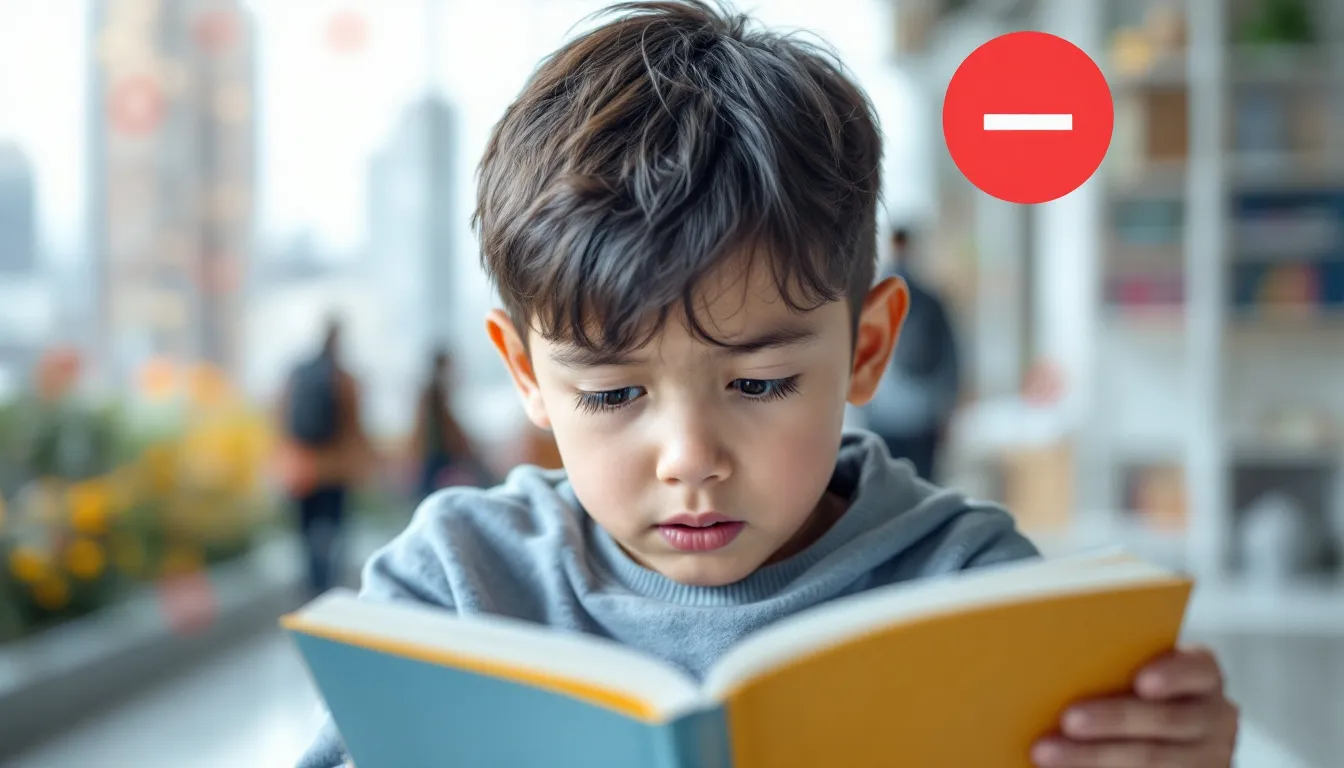
A proactive approach is necessary for managing myopia in children. Early screening and treatment are crucial, as they can prevent more severe myopia and associated vision problems. In countries like Taiwan, aggressive screening and treatment in schools have been implemented to reduce myopia rates.
Encouraging outdoor activities is one of the most effective ways to manage myopia in children. Spending more time outdoors can significantly reduce the incidence of myopia. A 2017 study found that engaging in outdoor activities is associated with a 28% reduction in the likelihood of needing spectacles.
An eye doctor can guide various treatment options for controlling myopia in children. Treatments like atropine eye drops, peripheral defocus contact lenses, and vision therapy can all be discussed to find the best approach.
Long-Term Risks and Complications
Before:
Severe myopia can lead to significant long-term risks and complications. Retinal detachment, a serious issue, can result in permanent vision loss if untreated. Severe myopia increases the risk of developing cataracts. Additionally, individuals with this condition are more prone to other eye diseases.
After:
Severe myopia can lead to significant long-term risks and complications, including:
-
Retinal detachment, a serious issue that can result in permanent vision loss if untreated
-
Increased risk of developing cataracts
-
Higher susceptibility to other eye diseases
Regular eye health monitoring is essential for individuals with severe myopia to prevent and manage potential complications. Early detection and treatment of these issues can help maintain eye health and reduce the risk of serious vision problems.
Preventing Myopia Progression
Combining lifestyle changes and medical interventions helps prevent myopia progression. Encouraging children to play outside for at least 90 minutes a day can help reduce myopia progression. Increased outdoor activity, particularly for at least 40 minutes a day, has been shown to reduce the incidence of myopia in children.
Low-dose atropine eye drops can significantly reduce the rate of myopia progression in children when used consistently. Low-dose atropine eye drops used over 2 to 3 years may slow myopia progression. Multifocal contact lenses and Ortho-K lenses, worn overnight, are also effective in slowing the progression of myopia while correcting vision.
Peripheral defocus contact lenses are another option designed to reduce side vision blur and slow the growth of myopia. These preventive measures, along with regular eye examinations, effectively manage myopia.
Society and Lifestyle Impacts
Myopia is a prevalent eye condition that typically becomes apparent before the age of 20. Approximately 40% of individuals in the U.S. are affected by myopia, and this figure is increasing, especially among children. This rise can be attributed to various environmental factors, including increased urbanization and lifestyle choices.
Urban living environments, characterized by limited outdoor play and early academic pressures, contribute to the higher prevalence of myopia among children. Population density, nighttime lighting, and reduced green spaces are all linked to increased myopia incidence.
Mitigating myopia spread requires addressing these societal and lifestyle impacts.
Summary
In summary, myopia is a common vision condition with various causes, symptoms, and treatment options. Understanding the factors that contribute to myopia, recognizing its symptoms, and seeking timely diagnosis and treatment are essential steps in managing this condition. From eyeglasses and contact lenses to refractive surgery and vision therapy, there are multiple ways to correct and control myopia.
Taking proactive steps to manage myopia, especially in children, can prevent long-term complications and improve overall eye health. Encouraging outdoor activities, regular eye examinations, and exploring various treatment options can make a significant difference. Let’s commit to better eye care and ensure clear vision for ourselves and our loved ones.
Frequently Asked Questions
What are the common symptoms of myopia?
Common symptoms of myopia include blurry vision at a distance, frequent squinting, and headaches caused by eye strain. It's important to consult an eye care professional if you experience these symptoms.
How is myopia diagnosed?
Myopia is diagnosed through a comprehensive eye examination that includes a visual acuity test and the use of a retinoscope to assess refractive error. This thorough evaluation helps ensure accurate detection and appropriate management of the condition.
What treatment options are available for myopia?
Effective treatment options for myopia include eyeglasses, contact lenses, refractive surgery, and vision therapy. You should consult with an eye care professional to determine the best choice for your specific needs.
How can myopia progression be prevented in children?
To effectively prevent myopia progression in children, encourage outdoor activities, consider low-dose atropine eye drops, and explore options like multifocal or Ortho-K contact lenses. These strategies can lead to better eye health outcomes.
What are the long-term risks associated with severe myopia?
Long-term risks associated with severe myopia include retinal detachment, cataracts, and other serious eye diseases, highlighting the importance of regular eye health monitoring.






